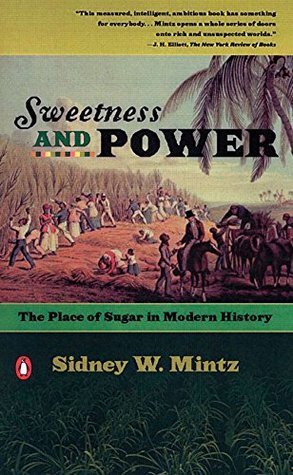More on this book
Kindle Notes & Highlights
Read between
September 23, 2020 - June 18, 2021
foci
in some ways to availability,
Eating and nurturance are closely linked in infancy and childhood, no matter how their connection may be altered later.
“the essence of the thing lies in the physical act of eating together”3—a bond, created simply by partaking of food, linking human beings with one another.
In this study, I have tried to place a single food, or category of foods, in the evolution of a modern western nation’s diet. It involved no fieldwork per se—though I stumbled across issues that might be better understood if fieldwork were directed to their exposition. Moreover, though I touch on the social aspects of ingestion, I am concerned less with meals and more with mealtimes—how meals were adapted to modern, industrial society, or how that society affected the sociality of ingestion, how foods and the ways to eat them were added to a diet or eliminated from it.
In 1000 A.D., few Europeans knew of the existence of sucrose, or cane sugar. But soon afterward they learned about it; by 1650, in England the nobility and the wealthy had become inveterate sugar eaters, and sugar figured in their medicine, literary imagery, and displays of rank. By no later than 1800, sugar had become a necessity—albeit a costly and rare one—in the diet of every English person; by 1900, it was supplying nearly one-fifth of the calories in the English diet.
Sugar beets were not economically important as a source of sucrose until the middle of the nineteenth century, but sugar cane has been the prime source of sucrose for more than a millennium—perhaps for much longer.
Nearchus, Alexander’s general, sailing from the mouth of the Indus River to the mouth of the Euphrates, asserted that “a reed in India brings forth honey without the help of bees, from which an intoxicating drink is made though the plant bears no fruit.”3
sugar must be crystallized from liquid. What we call “sugar” is the end product of an ancient, complex, and difficult process.
all cases cane must be cut when ready so as not to lose its juice or the proportion of sucrose in this juice; and once it is cut, the juice must be rapidly extracted to avoid rot, desiccation, inversion, or fermentation.
This extraction can be accomplished in a number of different ways. The cane can be chopped, then ground, pressed, pounded, or soaked in liquid. Heating the liquid containing the sucrose causes evaporation and a resulting sucrose concentration. As the liquid becomes supersaturated, crystals begin to appear. In effect, crystallization requires the concentration of a supersaturated solution in which sucrose is contained in liquid form. While cooling and crystallizing, low-grade massecuites leave “final” or “blackstrap” molasses. This molasses, or treacle, cannot be crystallized further by
...more
But the basic process is very old. In fact, there is no other practical means by which to “make” sugar from the cane than by “a series of liquid-solid operations” accompanied by heating and cooling; and maintaining proper temperatures, while keeping the investment in heating methods and fuels affordable, has been a serious technical problem throughout most of sugar’s history.
But the references are few, and puzzling. In a report by the Byzantine emperor Heraclius in 627, when he seized a palace dwelling of the Persian king Chosroes II near Baghdad, sugar is described as an “Indian” luxury.
The Arab expansion westward marked a turning point in the European experience of sugar.
From the Mediterranean basin, sugar was supplied to North Africa, the Middle East, and Europe for many centuries. Production there ceased only when production in New World colonies became dominant, after the late sixteenth century.
not. Though we never quite bring ourselves to say so baldly, the western view is one of amazement that the aesthetic capacities of
administration and taxation, technologies of irrigation, production, and processing, and the impulses to expand production.
The spread of sugar cane and the technology required for its cultivation and conversion encountered obstacles—mostly rain and seasonal temperature fluctuations. As we have seen, sugar cane is a tropical and subtropical crop with a growing season that may be in excess of twelve months; it requires large amounts of water and labor. Though it can flourish without irrigation, it does far better (and increases its sugar content) when it is watered regularly and when its growing season is not subject to sharp and sudden declines in temperature.
January. Such cane required just as much labor—from preparing the fields through processing the syrup—for less yield; this eventually counted against the Mediterranean industries when American sugar began to enter Europe in large quantities. On the other hand, the lack of adequate rainfall on the southern margins—as in Egypt—meant labor-intensive irrigation; in the Egyptian case, we are told, cane got twenty-eight wettings from planting to cutting.15
Sugar production was a challenge not only in technical and political (administrative) terms, but also in regard to the securing and use of labor.
took with them, wherever they went, every watering device they encountered. To existing pre-Islamic forms of irrigation in the Mediterranean, they added the Persian bucket wheel (which the Spaniards call noria, from the Arabic term for “creaking sound”), the water screw, the Persian qanat (that
remarkable labor-intensive system of engineered underground tunnels serving to carry ground water to arable fields by sheer gravity, apparently brought to Spain first and thence to North Africa), and many other devices. None of these innovations by itself could have made a decisive difference; what mattered was the energy and dedication of the conquerors and their apparently skillful use of local labor—in itself a subject of the greatest importance, but concerning which we still know relatively little.


